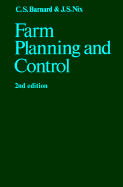Book contents
- Frontmatter
- Contents
- Notice to readers
- Preface to the first edition
- Preface to the second edition
- Selected metric conversion factors
- Part I The organisation of resources
- Part II The organisation of enterprises
- Part III The combination of enterprises
- 13 Principles and procedures in planning enterprise combination
- 14 Budgeting and programme planning
- 15 Linear programming
- 16 Uncertainty and farm organisation and planning
- 17 Further programming techniques
- 18 Matrix construction
- Part IV The control of resources and enterprises
- Selected further reading
- Index
13 - Principles and procedures in planning enterprise combination
Published online by Cambridge University Press: 01 June 2011
- Frontmatter
- Contents
- Notice to readers
- Preface to the first edition
- Preface to the second edition
- Selected metric conversion factors
- Part I The organisation of resources
- Part II The organisation of enterprises
- Part III The combination of enterprises
- 13 Principles and procedures in planning enterprise combination
- 14 Budgeting and programme planning
- 15 Linear programming
- 16 Uncertainty and farm organisation and planning
- 17 Further programming techniques
- 18 Matrix construction
- Part IV The control of resources and enterprises
- Selected further reading
- Index
Summary
Background to planning enterprise combination
The previous part of the book was concerned with planning the organisation within individual enterprises. The present part considers ways of planning their combination into an overall farming system. Although, as has already been stressed, these two sides of planning must not in practice be divorced from one another, it is assumed for the moment that the enterprises to be combined into a farming system are organised in an optimal manner.
All systems of planning are based on models, which are abstractions from the real world in that they contain only part of the detail that exists in practice. An efficient farm planning model should ideally contain just sufficient information to enable the planning situation to be encompassed realistically. On the one hand, nothing is gained if a solution is obtained using a superfluity of data when the same result could have been achieved with less. Indeed, the reverse is rather the case, because more time is required to handle the extra data and there is a greater chance of errors occurring. In addition, a large amount of data may make it more difficult to discern the really significant relationships. On the other hand, there is no virtue in pruning the amount of information in a model to such an extent that solutions are likely to be either unfeasible or else inferior, in terms of stated objectives, to those that could have been obtained.
- Type
- Chapter
- Information
- Farm Planning and Control , pp. 281 - 313Publisher: Cambridge University PressPrint publication year: 1980



